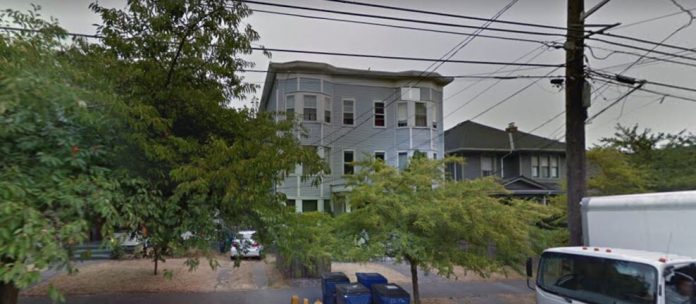The other day, one of the board members of the group organizing to kill the (MHA) Mandatory Housing Affordability program’s nominal upzones that will increase the construction of affordable housing, stated, “The only family-sized housing for rent is a house, and 23% of Seattle’s standalone single-family houses are rentals. Upzoning Seattle is anti-family.”
This is an, um, interesting statement. For one, most residents in Seattle don’t live in families – and the vast majority of new residents are single. Less than 5% of the city is composed of households greater than four people. Most of the renting families we know in the city don’t actually live in “stand-alone single-family houses”. Personally, we family rents a two-bedroom accessory dwelling unit (ADU). Many of our friends with kids live in apartments, townhomes, or duplexes. Several of our neighbors are single parents who live in apartments or condos–despite the claim above, these are all families, living in “family-sized housing”–that aren’t detached houses.
The belief that detached housing is the best option for families is dated and frankly privileged. Households in this city are incredibly diverse – nuclear families, blended families, single parents, cohabitating parents, extended families, intergenerational families, adopted families, and multitudes more. The notion that a singular form of housing (detached homes), increasingly accessible only to the wealthy, can accommodate them is, to say the least, misguided.
Multifamily housing is illegal on over 80% of the land where housing is legal in Seattle. Our state’s condo liability laws have ensured that almost no new condos have been built in the city’s largest housing boom to date. On Tuesday, The Seattle Times ran an article stating that the median price of a single-family home in Seattle is $830,000, having increased over $100,000 in the last year. This means the collective value of single-family homes–driven largely by zoning-enforced scarcity–in just the last year, increased by nearly $14 billion dollars. Billion. That kind of wealth would fund nearly 50,000 family-friendly homes. Do we not have a housing crisis?
Zillow shows a whopping 32 homes with more than two bedrooms for rent under $2,500 per month. Only two are within a couple of miles of Downtown Seattle. Several are short-term leases. Most of these homes are old, poorly insulated, and have high utility bills. Many are also on loud, polluted, dangerous arterials. They aren’t great options for families.
The nearly citywide ban on multifamily housing is not, in fact, a family-friendly policy.
If upzoning is “anti-family”, then downzoning must be “pro-family”. However, we know from the history of zoning, the stagnation and depopulation of single-family zones, and the increasing lack of affordability due to a nearly citywide moratorium on affordable, multifamily housing –this isn’t true. Failing to upzone and accommodate more family-friendly, multifamily housing will only ensure that those who aren’t wealthy will have fewer and fewer options. We’ve been watching this play out across the city for years.
If we want to see families (of all types) thrive in this city, we need to let go of classist norms that price them out. We need to revise land use policies so that multifamily housing is legal everywhere housing is legal. We need to remove owner-occupancy requirements for ADUs and backyard cottages so they can be accessible to a larger share of families. We need to make much more room (yes, upzones) to allow family-friendly, livable forms of housing such as cooperatives, baugruppen, cohousing, and social housing. But on top of that, “family friendly” policies need to allow multifamily housing near parks –so that children have places to play, they need to prioritize mobility –through increased transit and bike infrastructure –as many young families are ditching cars for transit and bikes, they need to allow multifamily housing near schools. All of these things also happen to be incredibly sustainable. We’re supposed to be one of the most progressive cities in the United States, but our land use policies are some of the most regressive. We will never achieve our climate goals without addressing this.
Seattle is sitting at the confluence of a hundred years of anti-multifamily housing, poor planning, and condo liability laws that overly restrict non-traditional forms of housing. Multifamily zoning and single-family zoning are the exact same use –dwelling –and preventing new residents who aren’t wealthy from 80% of the area where dwelling is legal, is a recipe for ever-expanding inequality and economic segregation. As the city continues to skew younger and majority renter, this will only magnify. We need widespread acceptance of the need to change zoning in this city (and region), and we need our land use regulations to recognize and accept the multitude of household types and their vastly different economic circumstances and habitation preferences over the privileged norms of the last century.
A better, more livable, and more sustainable world is possible – but it requires re-legalizing family-friendly housing. Everywhere.
This is a cross-post from Mike Eliason’s blog on Medium. The title image is a pre-zoning condo in a downzoned single-family zone courtesy of Google Streetview.
What Is the Correct Percentage of Single-Family Zoning in Seattle?
Mike is the founder of Larch Lab, an architecture and urbanism think and do tank focusing on prefabricated, decarbonized, climate-adaptive, low-energy urban buildings; sustainable mobility; livable ecodistricts. He is also a dad, writer, and researcher with a passion for passivhaus buildings, baugruppen, social housing, livable cities, and car-free streets. After living in Freiburg, Mike spent 15 years raising his family - nearly car-free, in Fremont. After a brief sojourn to study mass timber buildings in Bayern, he has returned to jumpstart a baugruppe movement and help build a more sustainable, equitable, and livable Seattle. Ohne autos.



